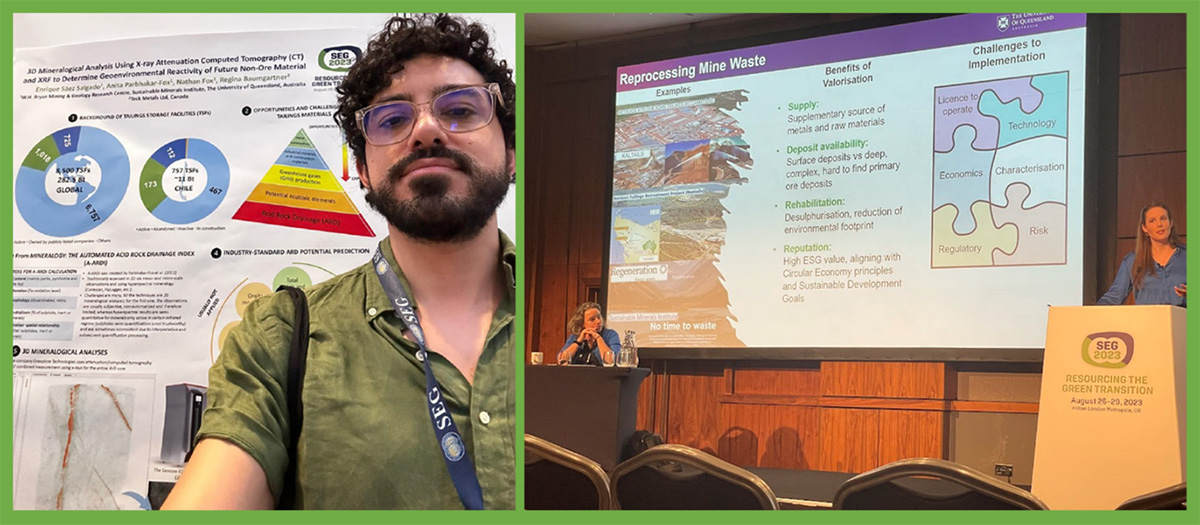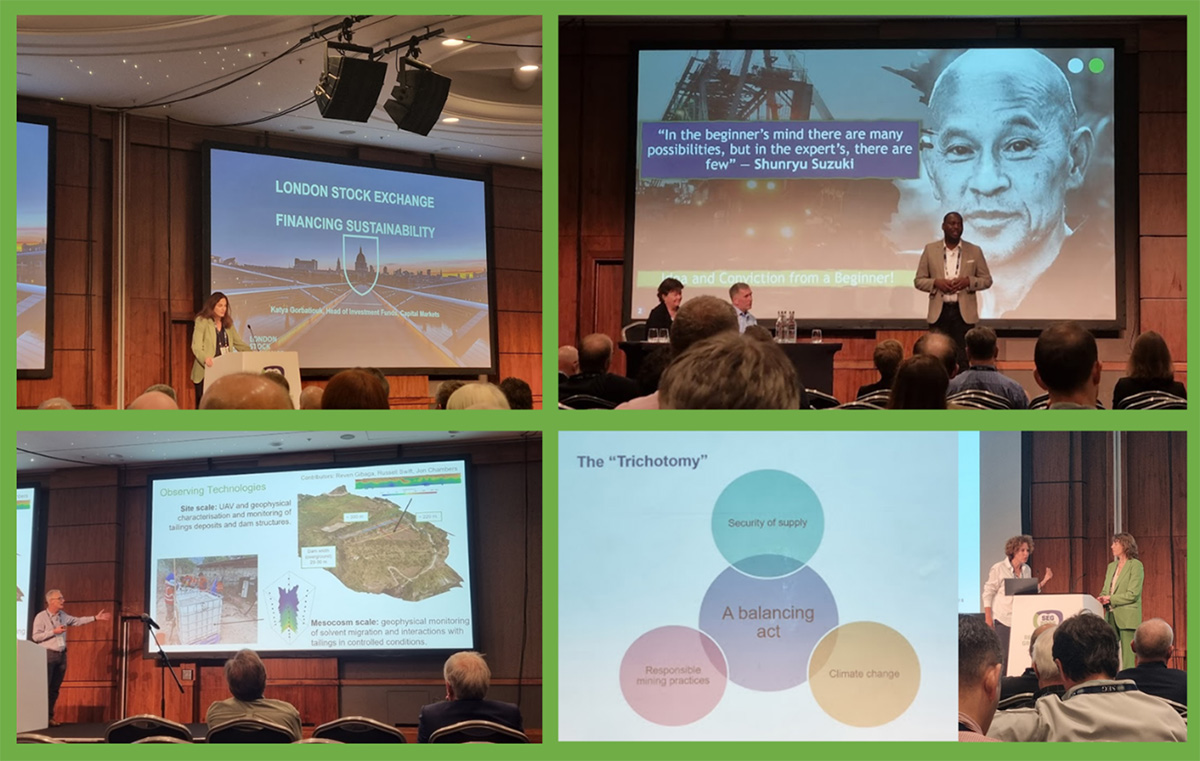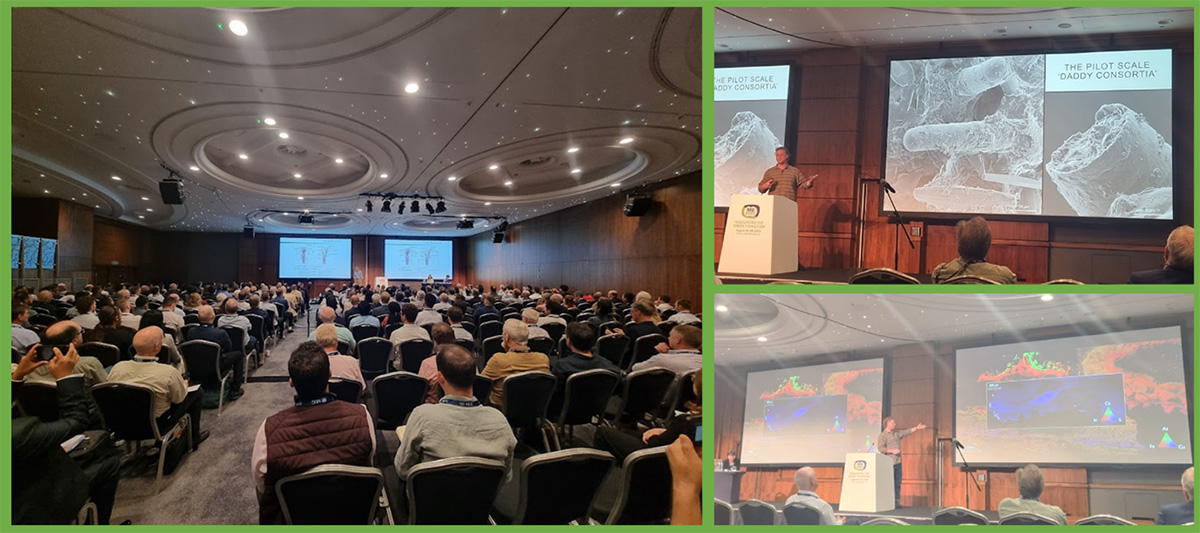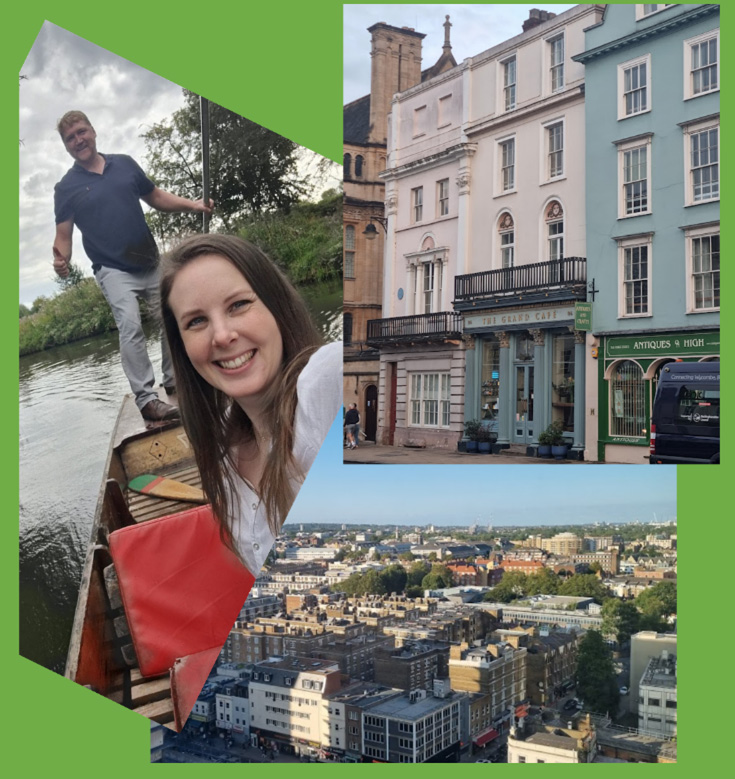SEG2023: Resourcing the Green Transition
The Society of Economic Geologists (SEG2023) conference was hosted in London this year and was attended by 900+ attendees. This also involved 180 students who were supported by the SEG to travel and present their research, including MIWATCH’s PhD candidates Enrique Sáez Salgado and Loren Nicholls.
Enrique showed his poster on 3D Mineralogical analysis using X-Ray attenuation computed tomography (CT) and XRF to determine geoenvironmental reactivity of future non-ore material, which demonstrated the results of Computed Tomography analyses made on drill core samples in Orexplore facilities in Perth, Australia. This study forms part of his research focussed on predicting acid rock drainage (ARD) of future mine wastes using hyperspectral mineralogy. Enrique recognises that it is still challenging for professionals and the industry to approach mining as a holistic business and to consider mine wastes and related effects as part of the resource projects.
“MIWATCH and UQ made a great effort on presenting knowledge on mine waste and non-ore material at this important conference, but besides two other talks related on these topics, there needs to be more importance placed on this within the economic geology sector. We are closing the gap by exposing economic geologists to new advances in the geo-enviro-economic emerging cross field”, Enrique mentions.
Loren presented her studies on cobalt deportment entitled “Chasing Cobalt: Recovery of critical metals from copper mine tailings utilizing microanalytical characterisation for improved geometallurgical outcomes” on Monday morning in the Battery Metals session. The presentation took the audience on a journey from macro scale historical tailings sampling and facies logging, mineralogy and particle characteristics, and finally to the microscale geochemical signatures and deportment of cobalt within individual grains. It demonstrated the importance of detailed geometallurgical characterisation in understanding cobalt distribution within a tailings dam to inform mining and mineral processing options.

The inclusion of these talks and posters on environmental challenges and solutions is a great direction to take, in comparison to previous SEG meetings. Technical themes included Battery Metals, European Metals (historic districts, new opportunities), Transformational Science, as well as the customary Copper and Gold systems and Exploration sessions.
Plenary talks ranged the political, economic and strategic realms of critical mineral supply. Rebecca Major (Lawyer, Herbert Smith Freehills LLP) and Kate Harcourt (Independent Environmental and Social Adviser) opened the conference with a joint talk on the demand for ‘clean and green’ raw material sources outgrowing the demand for metals at any cost, and the importance of transparency in the supply chain. Katya Gorbatiouk provided insights into capital markets and global trends from the point of view of the London Stock Exchange, while Julian Kettle (Vice Chairman of Metals and Mining at Wood Mackenzie) explained risk of supply and a sobering description of how government targets on carbon reduction are essentially unrealistic for our current level of industrialisation.

On the technical side of things, Melissa Gregory (Rio Tinto) strongly advocated for early stage geometallurgical characterisation in the mining life cycle. Gawen Jenkin took the audience through developments in insitu tailings mining in the Philippines- a great example of commercialisation of tailings processing coupled with environmental remediation. Other standout talks were by Quentin Dehaine on cobalt deportment, Glen Nwalia on using predictive modelling as a tool for improved geological and metallurgical outcomes, and MIWATCH alumni Tom Jones who showed some spectacular μXRF images of tailings and waste rock from MIWATCH sampling campaigns and the distribution of elements controlled by microbial activity.

It was also a good opportunity for catching up with colleagues and industry experts. Loren was able to meet up with Oxford-based Ashley Norris (Norris Scientific), who had previously come to Brisbane, Australia to provide a LADR training course for LA ICP-MS data reduction. They had a lot of fun punting on the river and chatting all things laser ablation!

All in all, the SEG2023 conference was a good step towards the integration of economic geology and sustainable mining and it was wonderful to see the prevalence of critical minerals particularly in the posters. London was vibrant and amazingly sunny!
Next stop for MIWATCH…..Zurich for the SGA2023 conference!
